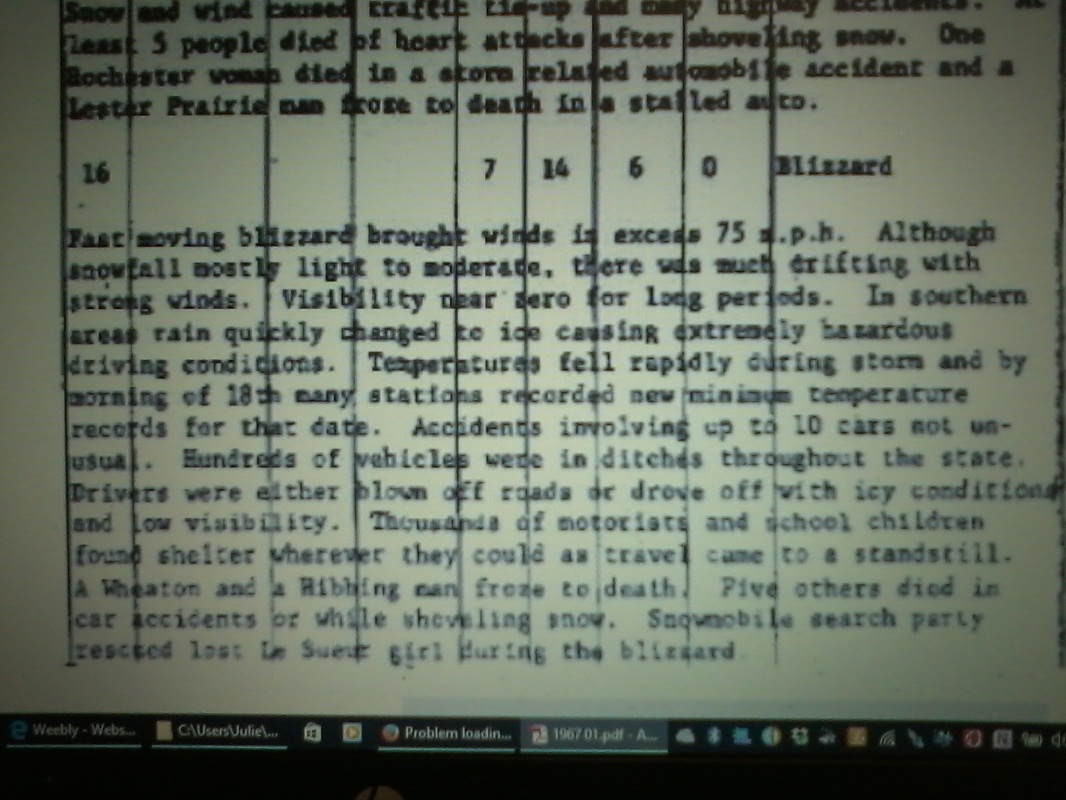The few memories Kevin Asmus has of the Chokio Bus rescue are clear ones, because he played a role in rounding up a vehicle for the caravan.
Kevin recalls being home after school was dismissed on Monday, Jan. 16, 1967. His father, Kenny Asmus, came home at noon, to hear from his wife, Jeanne, that a school bus was stranded.
“Dad said ‘Well, we gotta do something about that,’” Kevin remembers.
Kevin and his older brother Mick joined their father to go next door to talk with the Ehrps. Gerald Ehrp did road construction and had a Catepillar sitting on the property.
Kevin doesn’t remember if the Cat was configured with a snow plow or road grader blade, but he clearly remembers going with his father and older brother Mick to talk. Gerald was gone for the day, so it was up to Kenny Asmus to explain the community’s dire need to borrow the Cat.
“Gee, I dunno. Maybe you should talk to Gerald,” Kevin recalls hearing Jan Ehrp say.
“We don’t have time. We’re taking it,” Kevin can remember his father saying.
“OK,” Jan replied.
By this time the blizzard was making it dangerous to be outside, so Kenny and his two sons tied themselves together along the length of a rope, to ensure one would not become separated and lost in the blizzard. The three worked together to hang tarps over the Cat and position Nipco heaters close to the Cat to warm it up.
“It was so cold, but it started up, and that’s about all I remember,” Kevin said.
Kevin says his father didn’t talk about the rescue much, but one funny story stays strong in Kevin’s memory.
After the children were rescued and returned to the Chokio Public School, Supt. Burton Nypen gave Kenny Asmus a particularly heartfelt greeting.
“Dad said Supt. Nypen was so excited to see the children arrive at the school that Nypen walked over to my Dad and kissed him right on the lips. Dad said that was the only time in his life he had been kissed by a man,” Kevin said.
Kevin’s knowledge of the rest of the rescue is thin, but he is quick to point out the heroism of all who joined in the life-saving efforts.
“A lot of guys were involved. The school bus driver, Clayton Kolling, risked his life to save those kids,” Kevin said. “He probably saved their lives.”
Kevin recalls being home after school was dismissed on Monday, Jan. 16, 1967. His father, Kenny Asmus, came home at noon, to hear from his wife, Jeanne, that a school bus was stranded.
“Dad said ‘Well, we gotta do something about that,’” Kevin remembers.
Kevin and his older brother Mick joined their father to go next door to talk with the Ehrps. Gerald Ehrp did road construction and had a Catepillar sitting on the property.
Kevin doesn’t remember if the Cat was configured with a snow plow or road grader blade, but he clearly remembers going with his father and older brother Mick to talk. Gerald was gone for the day, so it was up to Kenny Asmus to explain the community’s dire need to borrow the Cat.
“Gee, I dunno. Maybe you should talk to Gerald,” Kevin recalls hearing Jan Ehrp say.
“We don’t have time. We’re taking it,” Kevin can remember his father saying.
“OK,” Jan replied.
By this time the blizzard was making it dangerous to be outside, so Kenny and his two sons tied themselves together along the length of a rope, to ensure one would not become separated and lost in the blizzard. The three worked together to hang tarps over the Cat and position Nipco heaters close to the Cat to warm it up.
“It was so cold, but it started up, and that’s about all I remember,” Kevin said.
Kevin says his father didn’t talk about the rescue much, but one funny story stays strong in Kevin’s memory.
After the children were rescued and returned to the Chokio Public School, Supt. Burton Nypen gave Kenny Asmus a particularly heartfelt greeting.
“Dad said Supt. Nypen was so excited to see the children arrive at the school that Nypen walked over to my Dad and kissed him right on the lips. Dad said that was the only time in his life he had been kissed by a man,” Kevin said.
Kevin’s knowledge of the rest of the rescue is thin, but he is quick to point out the heroism of all who joined in the life-saving efforts.
“A lot of guys were involved. The school bus driver, Clayton Kolling, risked his life to save those kids,” Kevin said. “He probably saved their lives.”

 RSS Feed
RSS Feed
